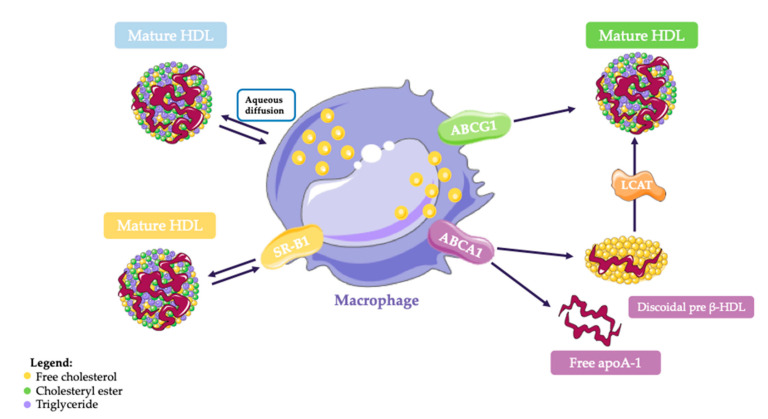Figure 1.
Mechanisms of cellular cholesterol efflux. This scheme shows the different pathways involved in macrophage cholesterol efflux and the specific high-density lipoprotein (HDL) subclasses acting as cholesterol acceptors. Cholesterol efflux occurs by four independent routes, including aqueous diffusion (AD), scavenger receptor B1 (SR-BI), ATP-binding membrane cassette transporter A1 (ABCA1) and G1 (ABCG1). The AD and SR-BI pathways consist of bidirectional flux of cholesterol between mature HDL particles and the cell plasma membrane and, as such, cholesterol transfer is driven by the cholesterol concentration gradient. Furthermore, cholesterol efflux can be unidirectionally and actively transported through the transporter ABCA1 to lipid free apoA-1 or discoidal pre β-HDL or through the transporter ABCG1 to mature HDL particles.

